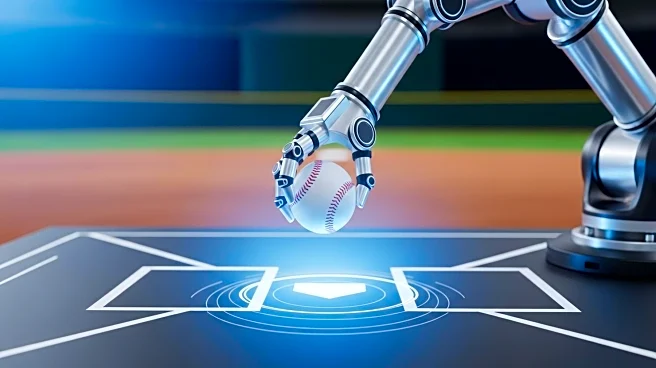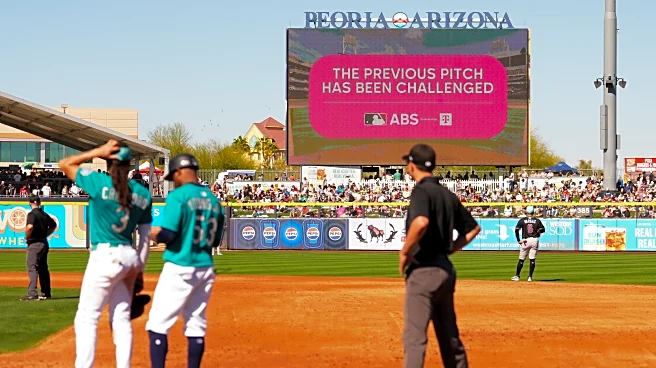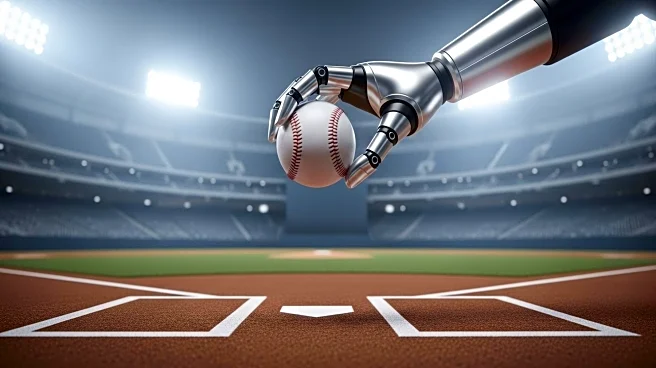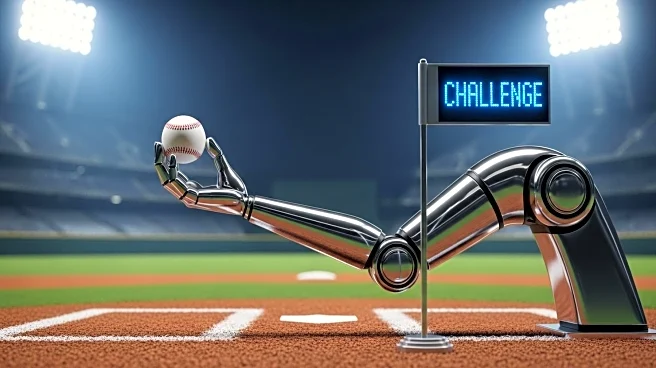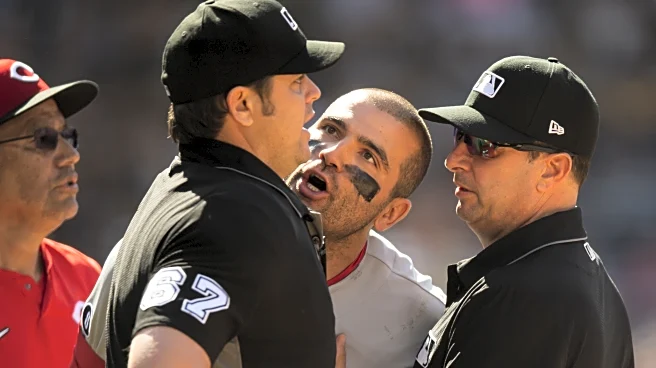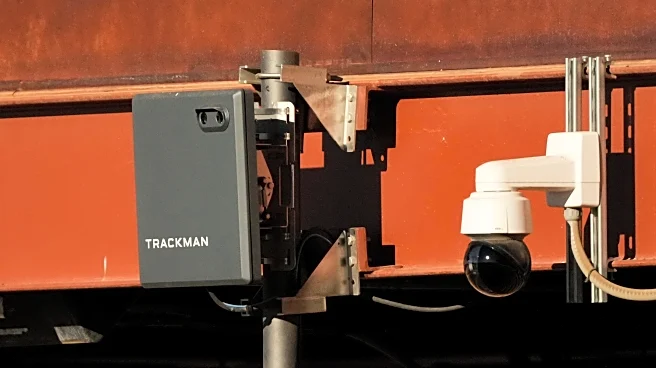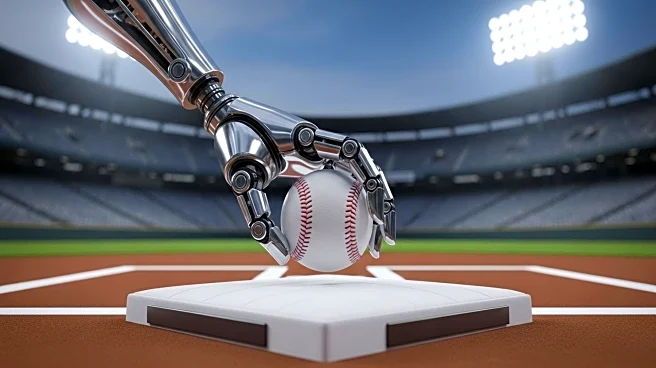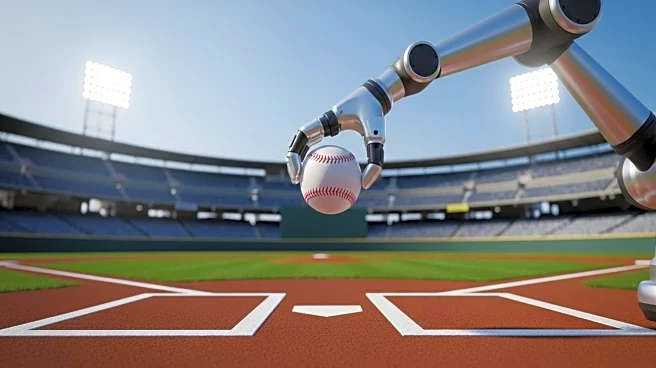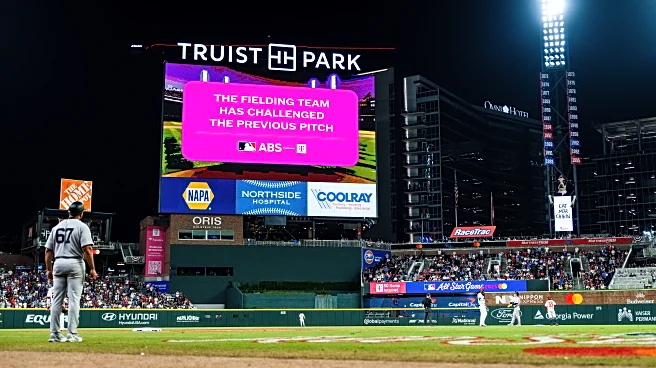What's Happening?
Major League Baseball (MLB) has announced the approval of the Automated Ball/Strike System (ABS) for use in the major leagues starting in 2026. The decision was made by MLB's 11-man competition committee, allowing teams to challenge two calls per game, with additional appeals available in extra innings. The ABS, which utilizes Hawk-Eye cameras, has been tested in minor leagues since 2019 and was trialed in the independent Atlantic League and Arizona Fall League. The system aims to reduce ejections related to balls and strikes, which accounted for over 60% of ejections in recent seasons. Human umpires will continue to call balls and strikes, but challenges can be made by pitchers, catchers, or batters, signaled by tapping their helmet or cap. Successful challenges will be retained by the team, and reviews will be displayed as digital graphics on outfield videoboards.
Why It's Important?
The introduction of robot umpires in MLB represents a significant shift in how the game is officiated, potentially reducing human error and increasing fairness in ball and strike calls. This change could impact the dynamics of the game, particularly for catchers who specialize in pitch framing—a skill that may become less relevant with ABS. The system's implementation could also lead to fewer ejections, improving the overall conduct and pace of the game. For players and teams, the ability to challenge calls provides a new strategic element, potentially affecting game outcomes and player statistics. The decision reflects MLB's ongoing efforts to modernize the sport and address long-standing issues with umpiring accuracy.
What's Next?
As MLB prepares for the 2026 season, teams and players will need to adapt to the new challenge system and its implications for gameplay. Training and strategy sessions will likely focus on understanding the ABS and optimizing challenge usage. The league may continue to refine the system based on feedback from players and officials, potentially adjusting the strike zone's dimensions or challenge rules. Stakeholders, including team management and player unions, will monitor the system's impact on game integrity and player performance. The broader baseball community will watch closely to see how the integration of technology affects the traditional aspects of the sport.
Beyond the Headlines
The adoption of robot umpires raises questions about the role of technology in sports and its impact on traditional skills and roles. Ethical considerations regarding the reliance on technology for decision-making in sports may arise, as well as discussions about preserving the human element in officiating. The change could influence other sports to consider similar technological integrations, potentially leading to a broader shift in how sports are officiated globally. The cultural impact on baseball, a sport deeply rooted in tradition, will be significant as fans and players adjust to this modern approach.


